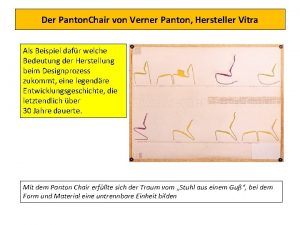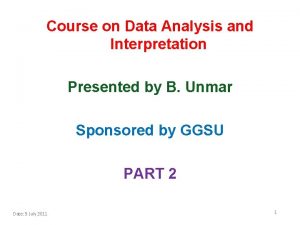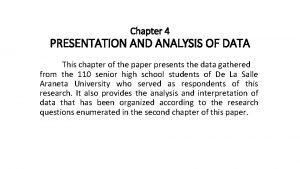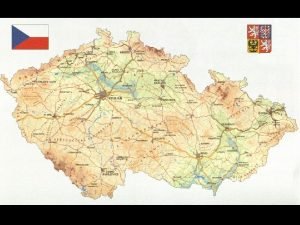Structural data processing and interpretation Krystof Verner Czech














- Slides: 14

Structural data processing and interpretation Krystof Verner Czech Geological Survey www. geology. cz krystof. verner@geology. cz

Geological map and structural cross-section Geological map § Views intersection of geological bodies with the Earth's surface § Plotted in the horizontal plane (the plane topographic maps) Geological map provides a three-dimensional image of the distribution, age, shape and orientation of geological bodies and their contacts on the displayed area Geological and structural cross-section § Display of geological structures and their relationships below the surface Cross-section is plotted in the vertical plane (section) below the selected line in the geological map Blockdiagram § The combination of geological maps and structural cross-section

Geological map 1: 25. 000 Stratigraphic chart Name of the map, scale and coordinates Legend Cross section Lithological and structural symbols

Necessary field data for processing of the geological / tectonic map Locality number Geographic localization and coordinates Outcrop description Lithology and mineral composition Description and orientation of structural data Regional fabrics and their relationships Lithological / tectonic contacts Brittle structures (joints, faults) Drawing of schematic blockdiagram or photograph (oriented)

Orientation data in structural geology Azimuth – angle of the line from north (0 ° = 360 °), measured in the horizontal plane Circular data - 2 D, measured either in the horizontal plane as the azimuth or in any plane as an angle relative to the reference line Axial data Directional data (vectors) Spherical data - orientation of structural elements in 3 D

Spherical data - orientation of structural elements in 3 D Three the most important numbers Direction of the plane (azimuth) Dip direction of the plane (= direction + 90°) Dip of the plane

How to measure structures Foliation (S) schistosity, schistosité, Schieferung Strike and Dip Strike (0°- 360°) Dip (0°- 90°) S = 320°/50° Dip direction and Dip direction (0°- 360°) Dip (0°- 90°) S = 230°/50° Transfer: The right hand rule Lineation (L) L = 351/53 Quadrant method: S = N 40°W/50°SE

Strike, dip, trend, plunge, pitch

Display of planes and lines in the stereographic projection

Contour orientation diagram

Directional orientation of joints or faults

Principles of geological intersection

Principles of geological intersection

Summary of the field research (Arba Minch)
 Kryštof kolumbus
Kryštof kolumbus Kryštof kolumbus
Kryštof kolumbus Kryštof kolumbus brambory
Kryštof kolumbus brambory Aarhus verner panton
Aarhus verner panton Hipokloridia
Hipokloridia Aarhus verner panton
Aarhus verner panton Endojen opiatlar
Endojen opiatlar Verner phone
Verner phone How does interpretation b differ from interpretation a
How does interpretation b differ from interpretation a Neighborhood processing in digital image processing
Neighborhood processing in digital image processing What is primary processing
What is primary processing Batch processing vs interactive processing
Batch processing vs interactive processing Example of analysis and interpretation of data
Example of analysis and interpretation of data Analyze vs interpret
Analyze vs interpret Data presentation and analysis
Data presentation and analysis



























